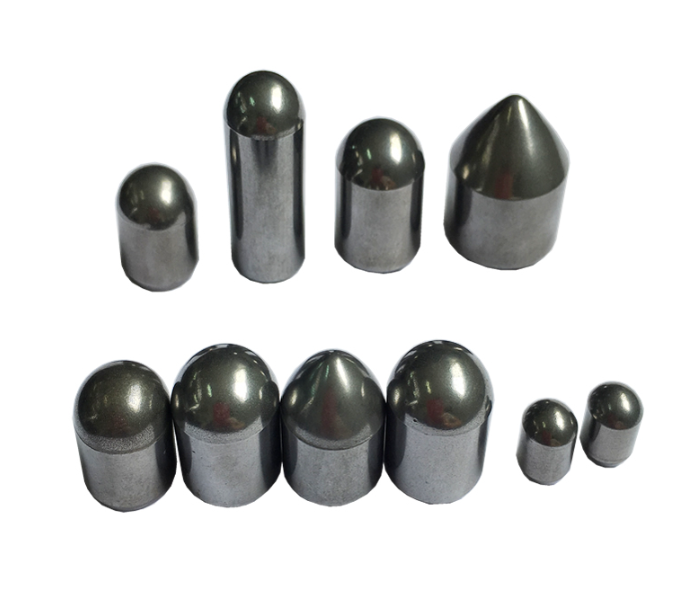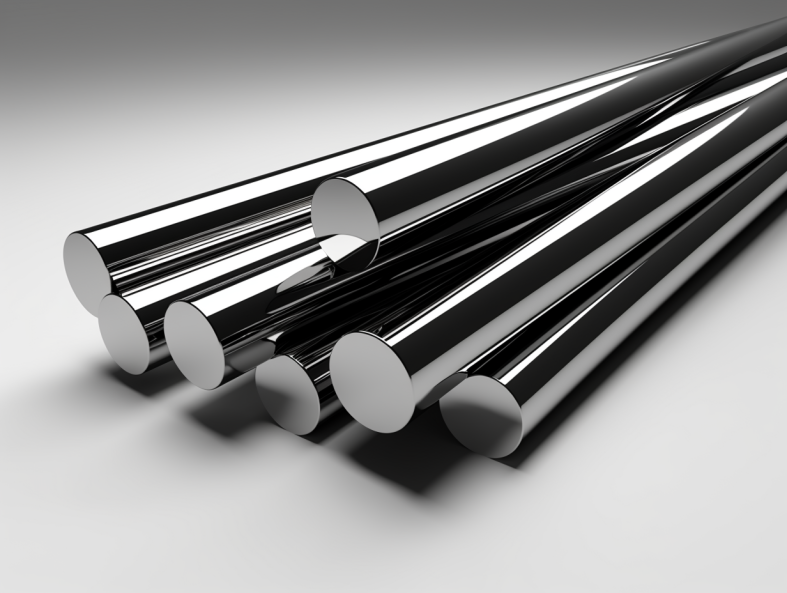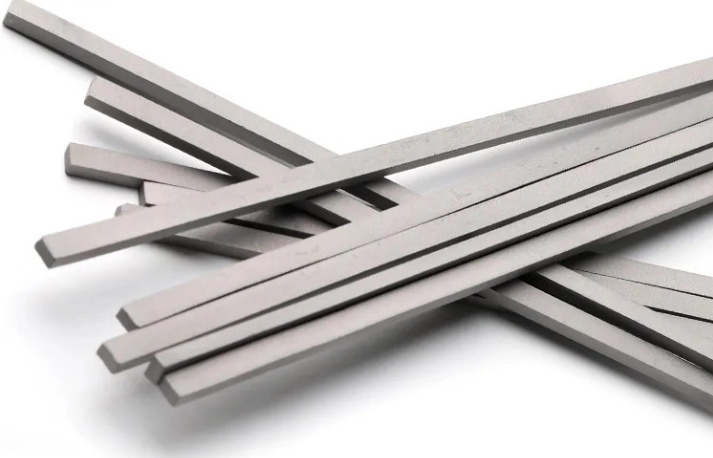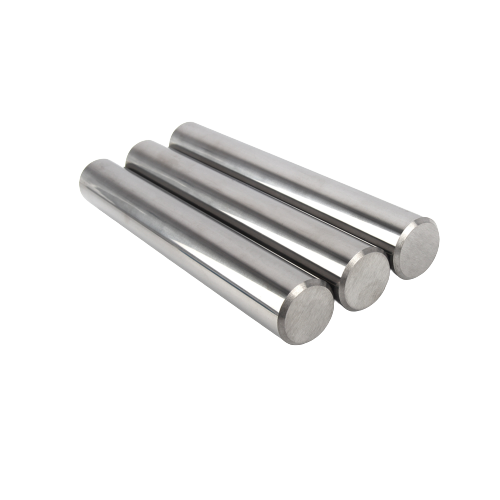In the relentless battle against wear and tear, where industries demand unwavering performance and exceptional durability, wear-resistant carbure cémenté button tips emerge as champions of endurance. These small but mighty components, meticulously engineered from one of the hardest materials known to man, stand defiant against abrasion, impact, and extreme temperatures, ensuring the longevity and efficiency of countless tools and equipment across a multitude of industries.
This comprehensive guide delves into the world of wear-resistant cemented carbide button tips, unraveling their exceptional properties, diverse applications, and the factors that set them apart as the ultimate solution for combating wear and maximizing performance in the most demanding environments.
What are Wear-Resistant Cemented Carbide Button Tips?
Deconstructing Durability: A Closer Look
Wear-resistant cemented carbide button tips are precisely engineered components typically composed of tungsten carbide powder, expertly blended with a binder metal, usually cobalt, and consolidated through a high-temperature sintering process. This intricate process yields an exceptionally hard and wear-resistant material, capable of withstanding the harshest operating conditions encountered in industries ranging from mining and construction to oil and gas exploration.

How Cemented Carbide Button Tips Work: The Science of Superiority
Unveiling the Mechanisms Behind Unmatched Performance
The remarkable performance of cemented carbide button tips stems from the unique properties imparted by their constituent materials and the intricate sintering process:
- Carbure de tungstène : Renowned for its exceptional hardness, ranking a near-perfect 10 on the Mohs hardness scale, tungsten carbide provides the primary defense against abrasion, wear, and impact, ensuring extended tool life and unwavering performance.
- Cobalt Liant : Acting as the bonding agent, cobalt enhances the toughness and impact resistance of the tungsten carbide matrix, preventing brittle fracture under high stress and impact loads, crucial for withstanding the rigors of demanding applications.
- Sintering Process: The carefully controlled sintering process at temperatures exceeding 1400°C (2552°F) fuses the tungsten carbide particles and cobalt binder, creating a dense, homogeneous material with exceptional hardness and wear resistance, the hallmark of these exceptional components.
Fabrication and Machining: From Powder to Precision
Engineering Excellence: The Journey of a Cemented Carbide Button Tip
The fabrication of wear-resistant cemented carbide button tips involves a series of precision engineering steps:
- Préparation de la poudre : Finely ground tungsten carbide and cobalt powders are meticulously blended in specific ratios to achieve the desired properties, ensuring consistency and performance tailored to specific applications.
- Pressage : The blended powder is then compacted under high pressure in precisely shaped dies, forming the initial “green” button tip shape, a crucial step in achieving the desired final geometry.
- Frittage : The green button tips undergo a high-temperature sintering process in controlled atmospheres, fusing the powders and creating the final dense, hard material, transforming the compacted powder into a robust, wear-resistant component.
- Finition : After sintering, the button tips may undergo finishing operations such as grinding, lapping, or polishing to achieve the desired dimensions, surface finish, and tolerances, ensuring optimal performance and compatibility with various tools and equipment.
Market Dynamics: Riding the Wave of Demand
A Growing Market Fueled by Uncompromising Performance
The global market for wear-resistant cemented carbide button tips is experiencing robust growth, driven by:
- Surging Demand from End-Use Industries: The increasing demand for wear-resistant components in industries such as mining, construction, oil and gas exploration, and agriculture is fueling market expansion, as these sectors seek to enhance efficiency and reduce downtime.
- Progrès technologiques : Innovations in powder metallurgy, sintering techniques, and finishing processes are leading to the development of cemented carbide button tips with enhanced properties and performance characteristics, pushing the boundaries of wear resistance and durability.
- Focus on Sustainability: The extended lifespan and reduced maintenance requirements of cemented carbide button tips align with the growing emphasis on sustainability and reducing environmental impact, making them an environmentally responsible choice.
Cemented Carbide Button Tip Specifications: Navigating the Options
A World of Choices: Finding the Perfect Fit for Your Application
Wear-resistant cemented carbide button tips are available in a wide array of grades, sizes, shapes, and configurations to meet the specific demands of diverse applications.
| Fonctionnalité | Description | Options and Variations |
|---|---|---|
| Grade | Dictates the hardness, toughness, and wear resistance, influencing the button tip’s suitability for different applications and materials. | YG6, YG8, YG10, YG15, YG20 (increasing tungsten carbide content and hardness) |
| Taille | Determines the overall dimensions and application suitability, impacting the contact area and wear pattern. | Diameters ranging from a few millimeters to several centimeters |
| Forme | Influences the contact area, wear pattern, and application-specific performance, optimizing the button tip for its intended use. | Round, hemispherical, conical, ballistic, custom shapes |
| Configuration | Defines the attachment method and integration into tools or equipment, ensuring secure and reliable performance. | Plain, threaded, studded, brazed, welded |
Applications of Wear-Resistant Cemented Carbide Button Tips: Where Durability Reigns Supreme
Conquering Wear in Every Industry: A Testament to Unmatched Performance
The exceptional wear resistance, impact resistance, and hardness of wear-resistant cemented carbide button tips make them indispensable components in a wide range of applications:
- Exploitation minière et construction : Protecting drilling bits, cutting tools, crusher wear parts, and other equipment from the abrasive forces of rock, ore, and concrete, ensuring longevity and reducing downtime in demanding environments.
- Exploration pétrolière et gazière : Enhancing the durability and longevity of drilling tools, downhole motors, and other equipment operating in harsh, abrasive environments, crucial for maximizing efficiency and reducing operational costs.
- Agriculture and Forestry: Reinforcing tillage tools, ground engaging equipment, and harvesting machinery for extended service life in abrasive soils and demanding conditions, enhancing productivity and reducing maintenance needs.
- Travail des métaux et usinage : Providing wear-resistant surfaces for dies, punches, cutting tools, and other components subjected to high stress and abrasion, ensuring precision and extending tool life in demanding machining operations.
- Autres secteurs : Finding applications in industries such as chemical processing, power generation, and pulp and paper, wherever wear resistance and durability are paramount, demonstrating their versatility and critical role in diverse industrial settings.
Comparing Suppliers: Making Informed Decisions for Optimal Sourcing
Navigating the Landscape of Quality and Value: A Comparative Analysis
| Fournisseur | Localisation | Fourchette de prix (par pièce) | Spécialités |
|---|---|---|---|
| TRUER | Chine | $2.50 – $35+ | Sur mesure tungsten carbide products, competitive pricing, exceptional customer service |
| Élément six | Mondial | $5 – $50+ | Advanced materials and engineered solutions, global reach, focus on innovation |
| Kennametal | Mondial | $3 – $40+ | Metal cutting tools, wear-resistant solutions, established industry leader, extensive product portfolio |
Remarque : Prices are approximate and can vary based on grade, size, quantity, and other factors. It’s always recommended to contact suppliers directly for accurate pricing and availability.
Avantages et limites : Une perspective équilibrée sur la performance
Peser le pour et le contre : prendre des décisions éclairées pour votre application
| Avantages | Limites |
|---|---|
| Résistance exceptionnelle à l'usure : Unmatched resistance to abrasive wear, extending tool and equipment life, reducing downtime, and lowering maintenance costs. | Coût initial élevé : Can be more expensive than alternative materials upfront, requiring a higher initial investment. |
| High Hardness: Maintains sharpness and cutting efficiency over extended periods, enhancing productivity and reducing the need for frequent tool replacements. | La fragilité : Can be prone to chipping or fracture under high impact or shock loads, requiring careful consideration of the application’s impact and stress levels. |
| Résistance à l'impact : Withstands moderate to high impact forces, depending on grade and design, making them suitable for a wide range of demanding applications. | Les défis de l'usinage : Requires specialized machining techniques and equipment due to hardness, potentially increasing processing costs. |
| High-Temperature Performance: Retains hardness and properties at elevated temperatures, making them suitable for applications involving high heat and friction. | Limited Ductility: Not suitable for applications requiring significant bending or deformation, limiting their use in certain flexible applications. |
Beyond the Buttons: Exploring the World of Cemented Carbide
A Material of Many Talents: Applications Beyond Wear-Resistant Tips
While this guide has focused on wear-resistant cemented carbide button tips, it’s essential to recognize that cemented carbide’s versatility extends far beyond these small but mighty components. This remarkable material finds applications in:
- Outils de coupe : From drill bits and end mills to saw blades and router bits, cemented carbide’s hardness and wear resistance are revolutionizing cutting tool performance, enhancing precision, and extending tool life.
- Pièces d'usure : Nozzles, dies, bearings, seals, and countless other components subjected to wear benefit from the exceptional durability of cemented carbide, reducing maintenance needs and enhancing equipment longevity.
- Jewelry: Known for its scratch resistance and enduring shine, cemented carbide has emerged as a popular choice for wedding bands and other jewelry, offering a unique blend of durability and aesthetics.
Why Choose TRUER for Wear-Resistant Cemented Carbide Button Tips?
Partnering with Excellence: Your Trusted Source for Superior Performance
At TRUER, we’re not just suppliers of wear-resistant cemented carbide button tips; we’re your dedicated partners in achieving unparalleled performance and exceeding industry standards. Here’s why discerning customers choose us:
- Une qualité sans compromis : We utilize stringent quality control measures throughout our production process, ensuring that our cemented carbide button tips consistently meet the highest standards of performance and reliability, giving you peace of mind and confidence in your investment.
- Des solutions sur mesure : We understand that your needs are unique. Our team of experts works closely with you to understand your specific application requirements and provide customized solutions tailored to your exact specifications, ensuring the perfect fit for your application.
- Prix compétitifs : We strive to offer competitive pricing without compromising on quality, ensuring that you receive the best possible value for your investment, maximizing your return on investment.
- Un service à la clientèle exceptionnel : Our commitment to customer satisfaction is unwavering. We’re always available to answer your questions, provide technical support, and ensure that your experience with us is exceptional from start to finish, building lasting partnerships based on trust and reliability.
Frequently Asked Questions: Addressing Your Cemented Carbide Button Tip Queries
Q1: What factors influence the price of cemented carbide button tips?
A1: Several factors influence pricing, including the grade of cemented carbide (higher tungsten carbide content generally translates to higher cost), the size and complexity of the button tip, the quantity ordered, and the supplier’s pricing policies. It’s always recommended to request quotes from multiple suppliers for comparison.
Q2: How do I choose the right grade of cemented carbide button tip for my application?
A2: The optimal grade depends on the specific application requirements, including the type of material being processed, the operating conditions (temperature, pressure, impact), and the desired wear resistance. Consulting with a knowledgeable supplier like TRUER can help you make the best selection based on your unique needs.
Q3: Can cemented carbide button tips be repaired or refurbished?
A3: While cemented carbide is extremely hard and wear-resistant, it can experience wear and tear over time. In some cases, depending on the extent of wear, button tips can be refurbished through grinding or other specialized processes. However, if the wear is significant, replacement is often the most cost-effective solution to ensure optimal performance.
Q4: What are the safety considerations when working with cemented carbide button tips?
A4: Cemented carbide is extremely hard and can shatter or chip if dropped or struck sharply. When handling or installing cemented carbide button tips, it’s crucial to wear appropriate personal protective equipment (PPE), including safety glasses and gloves, to prevent potential injuries.
Q5: What is the lifespan of a cemented carbide button tip?
A5: The lifespan of a cemented carbide button tip varies significantly depending on factors such as the grade of cemented carbide, the operating conditions, the application itself, and the maintenance practices. In some cases, button tips can last for thousands of hours of operation, while in other demanding applications, their lifespan may be shorter. Regular inspection and timely replacement are crucial for maintaining optimal performance and preventing equipment damage.




